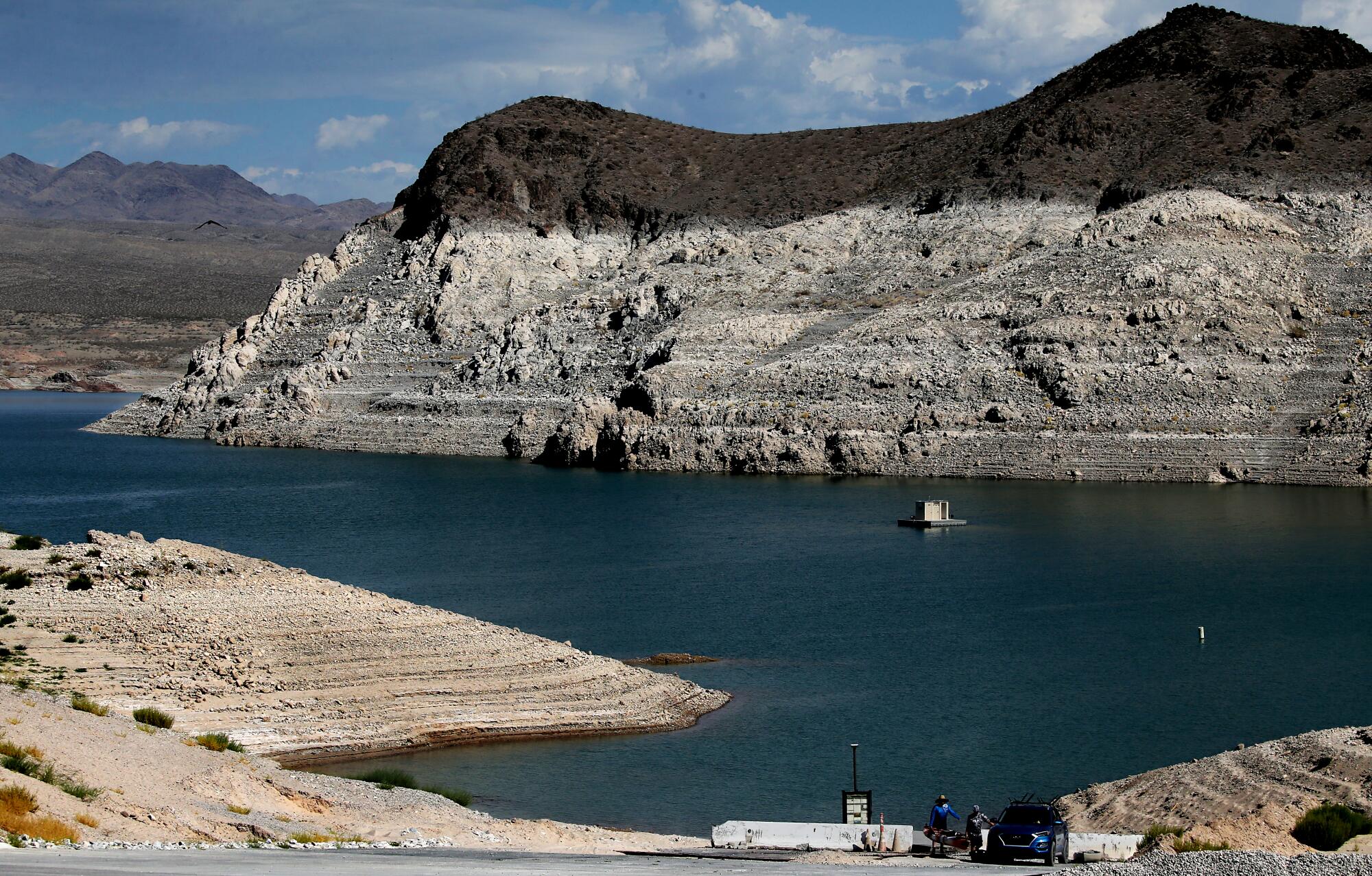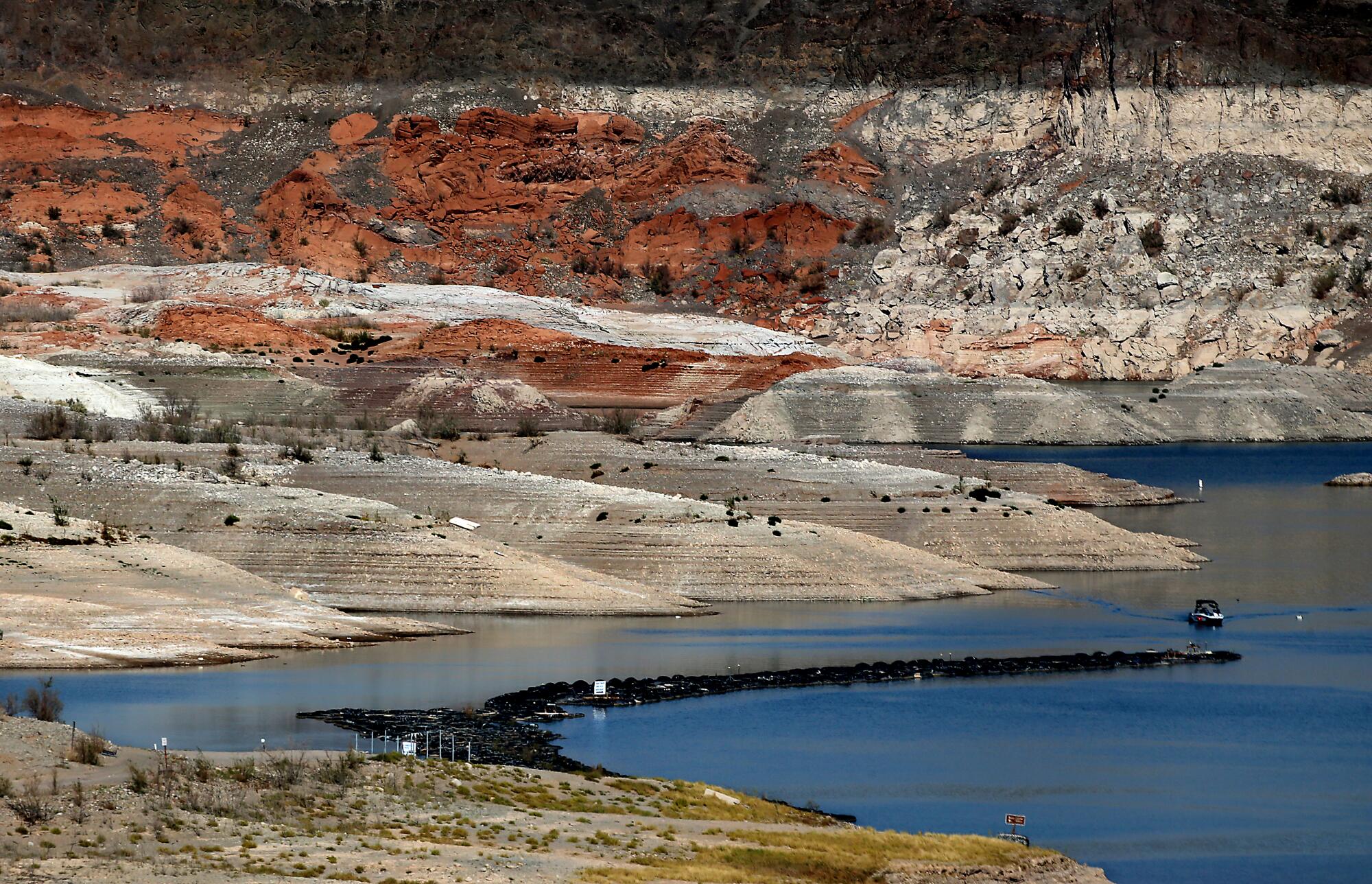
- Share via
The sun began to set but the temperature hovered around 106 degrees. I was there to document one of the latest objects to emerge from Lake Mead, the largest reservoir in the United States, serving the needs of some 20 million people in the Desert Southwest.
In recent weeks, lots of things have resurfaced, including dead bodies, formerly sunken boats and trash.
“It’s a totem pole for the climate age,” said Sam Morris, as he photographed a battered power boat, its stern buried in the mud of the drying lake, its bow pointing sharply upward at the almost cloudless sky. “It’s such a strange thing to see.”
A white band of dried rock now surrounds the vast lake.

It’s called a “bathtub ring” and clearly shows how much water levels have dropped in the last two decades, amid the driest conditions of the last 1,200 years, according to scientists. I was surprised by how much lower the lake looked from a year ago when I was last here.
The situation is critical.
The lake’s surface is at about 1,045 feet above sea level. If the reservoir eventually hits dead pool, water would no longer pass through the dam, which would cut off supplies to Southern California, Arizona and Mexico.

A hotter and drier environment caused by climate change accelerates aridification. Essentially, everything becomes thirstier — and the ecosystem becomes taxed even more, leaving less runoff from snow and rain flowing into rivers and streams. Climate change feeds itself.
I watched a wild mustang grazing in the distance, looking for sparse blades of grass pushing up from the stony ground. It’s hard to stand in the heat. It’s hard to breathe. It’s hard to think.

Sweat flows out of every pore.
It got dark and it felt like someone dimmed the lights in a sauna. The lake loses about six vertical feet of water every year to evaporation. From a ridge above the Lake Mead Marina, in the blue light of dusk, I saw long concrete boat ramps end short of the water’s edge.
It’s going to be another brutal summer.

To document the Colorado’s central role in life in the Southwest, Los Angeles Times photojournalist Luis Sinco traveled throughout the watershed and captured images that reveal how this river — grand and majestic, yet fragile — is under growing strains and is being pushed beyond its limits.


Now in its fourth year, the drought in California has reached record-breaking levels of dryness, with more than half of the state under the most severe level of drought.












